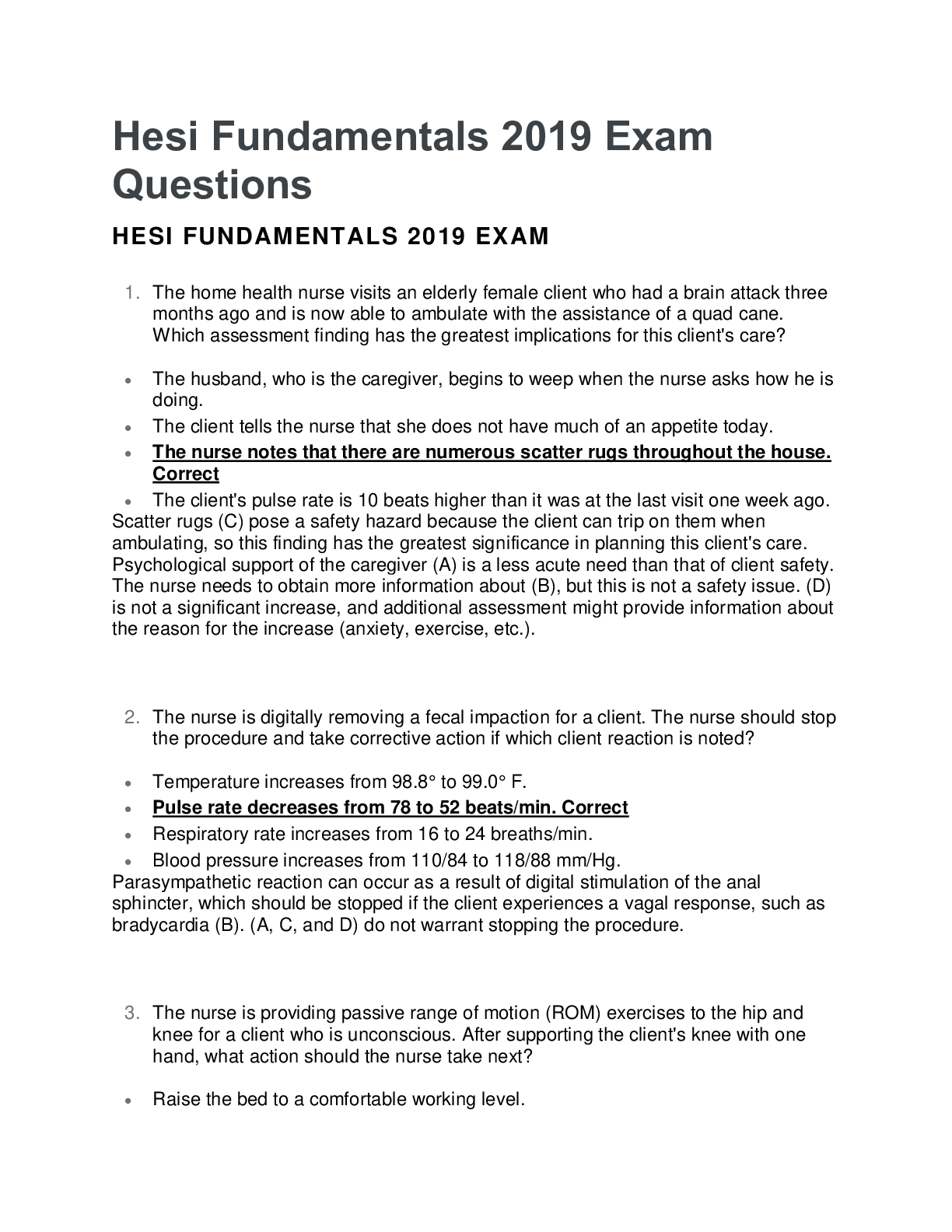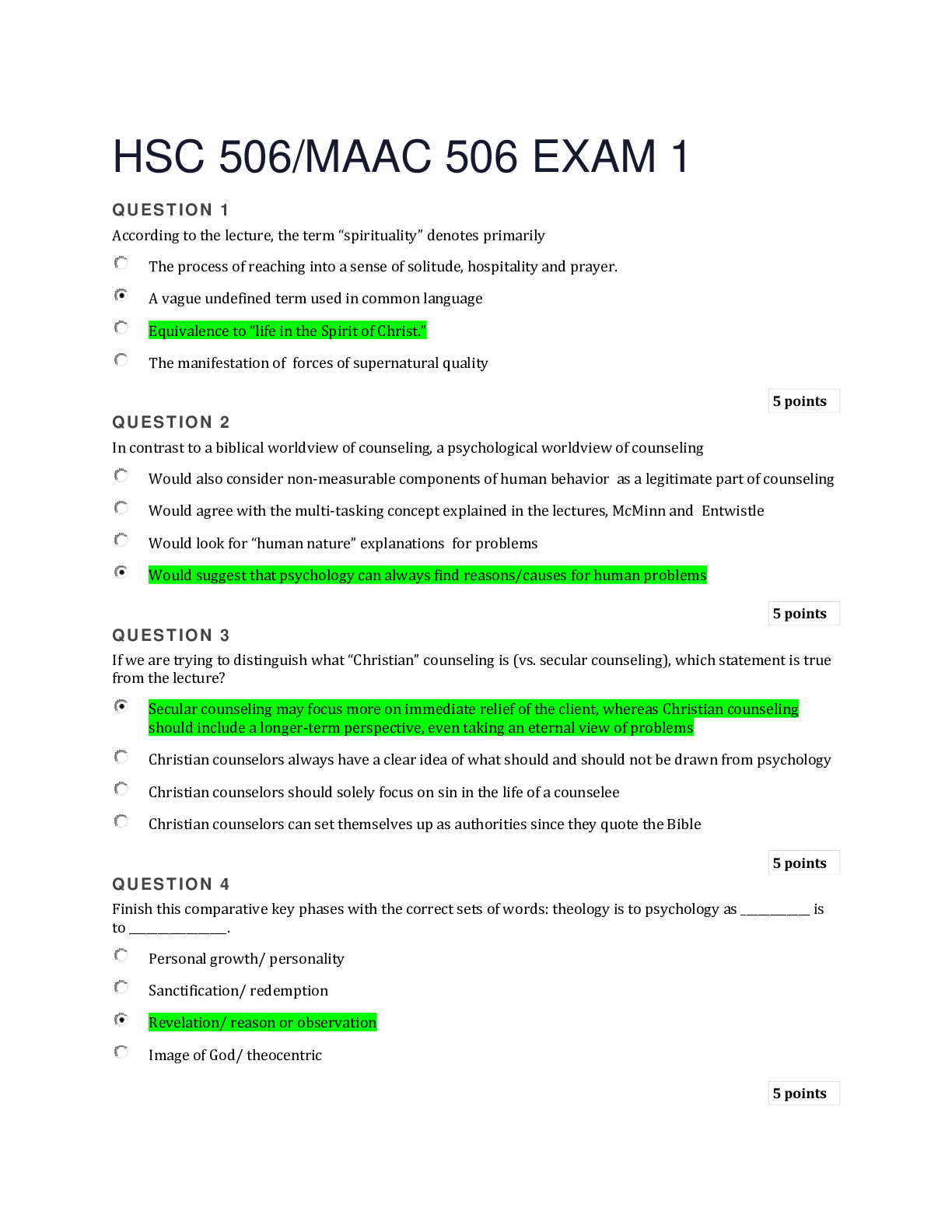*NURSING > EXAM REVIEW > BIO 171 Module 6 Exam Questions and Answers (All)
BIO 171 Module 6 Exam Questions and Answers
Document Content and Description Below
Question 1 2 / 2 pts True or False. Although viruses may contain their genome within an enclosed space (much like the nucleus of a cell), it is considered neither eukaryotic nor prokaryotic. Correc... t! True False Question 2 5 / 5 pts Describe the two basic components of a virus. Your Answer: Genomic material comprised of either DNA or RNA and a capsid A virus has (1) genomic material comprised of either DNA or RNA and (2) a capsid, a membrane-like protective structure that contains the genetic material, similar to the nucleus of a eukaryotic cell. Question 3 3 / 3 pts The surrounds the capsid of some viruses. Your Answer: envelope envelope Question 4 2 / 2 pts True or False. You would expect to see a viral envelope on a virus infecting a bacterial cell. True Correct! False False. The overwhelming majority of animal viruses are enveloped whereas the majority of plant or bacteria-infecting viruses are not. Question 5 3 / 3 pts Rank the following viruses based on their size from largest to smallest: Orthomyxovirus Poliovirus Variolavirus Your Answer: 1. Variolavirus 2. Orthomyxovirus 3. Polivirus Variolavirus (~200nm) > Orthomyxovirus (100-150nm) > Poliovirus (~30nm) Question 6 2 / 2 pts True or False: Viral replication occurs after it attaches and enters the host cell. Correct! True True. The viral genome is never replicated before attachment and entry. False Question 7 5 / 5 pts Place the following viral life cycle steps in order beginning with viral attachment and provide a description of each step. Uncoating: Release: Replication: Attachment: Entry: New infection: Your Answer: 1. Attachment: viral receptors bind to a host proteins on te surface of the cell. 2. Entry: The virus fuses with the host membrane and enters the cell 3. Uncoating: The viral capsid dissasembles 4. Replication: The viral genome provides the blueprint to make copies of itself 5. Exit: New viruses are produced and leave a cell. 6. New infection: Newly produced viruses leave the host cell and go on to infect new cells. The process outlined above now restarts. 3- Uncoating: the viral capsid disassembles 5-Release: New virus particles are produced and leave the cell 4-Replication: the viral genome is the ‘blueprint’ to make copies of itself 1- Attachment: viral receptors bind to host proteins on the surface of the cell 2- Entry: the virus fuses with the host membrane and enters the cell 6-New infection: newly produced viruses that left the host cell now go on to infect new cells. Question 8 3 / 3 pts A virus that infects bacteria is called a [answer1] and contains a [answer2] -sided polygon capsid. Your Answer: 1. bacteriophages 2. 20 sided polygon capsid 1. Bacteriophage ....................................continued [Show More]
Last updated: 2 years ago
Preview 1 out of 13 pages

Buy this document to get the full access instantly
Instant Download Access after purchase
Buy NowInstant download
We Accept:

Reviews( 0 )
$15.50
Can't find what you want? Try our AI powered Search
Document information
Connected school, study & course
About the document
Uploaded On
Oct 21, 2021
Number of pages
13
Written in
Additional information
This document has been written for:
Uploaded
Oct 21, 2021
Downloads
0
Views
68


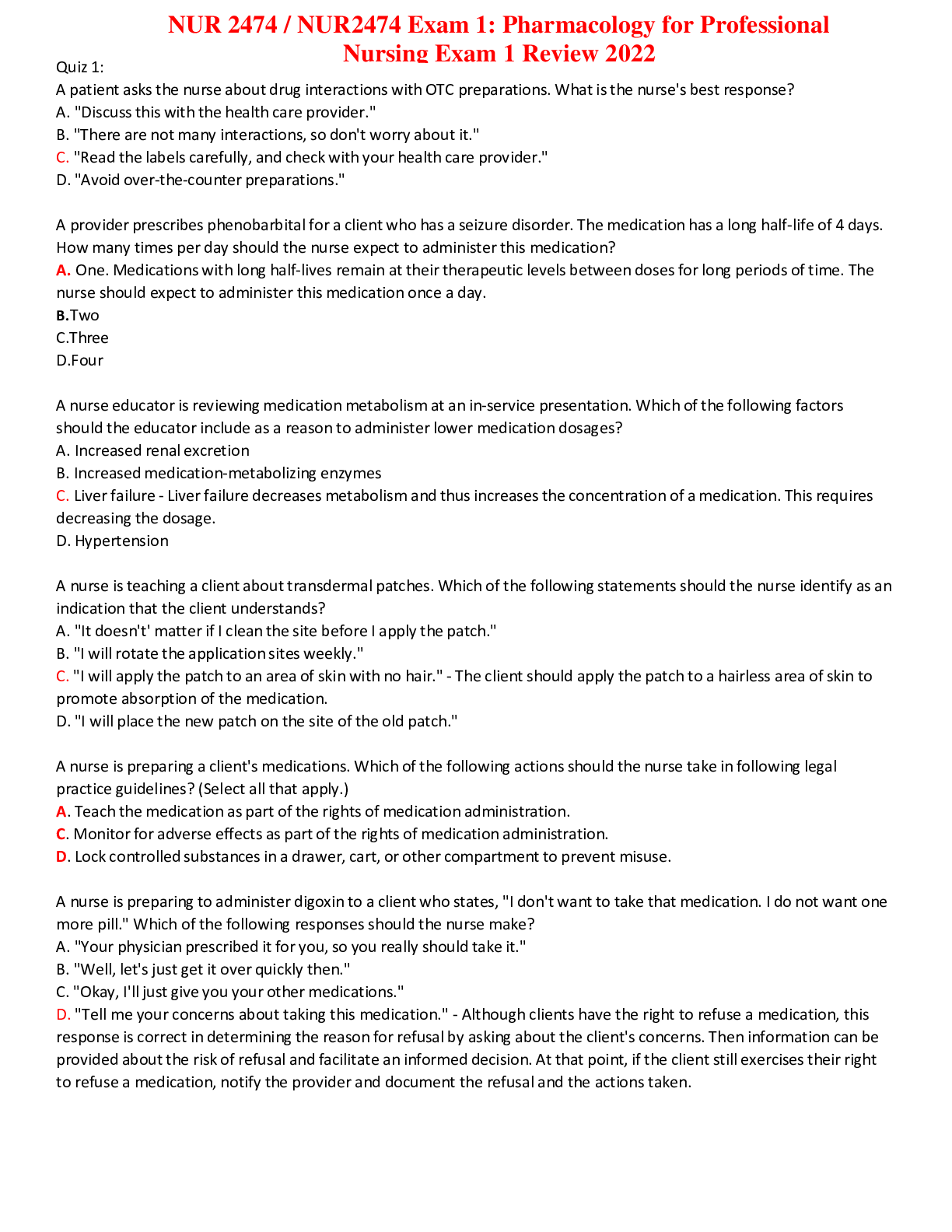


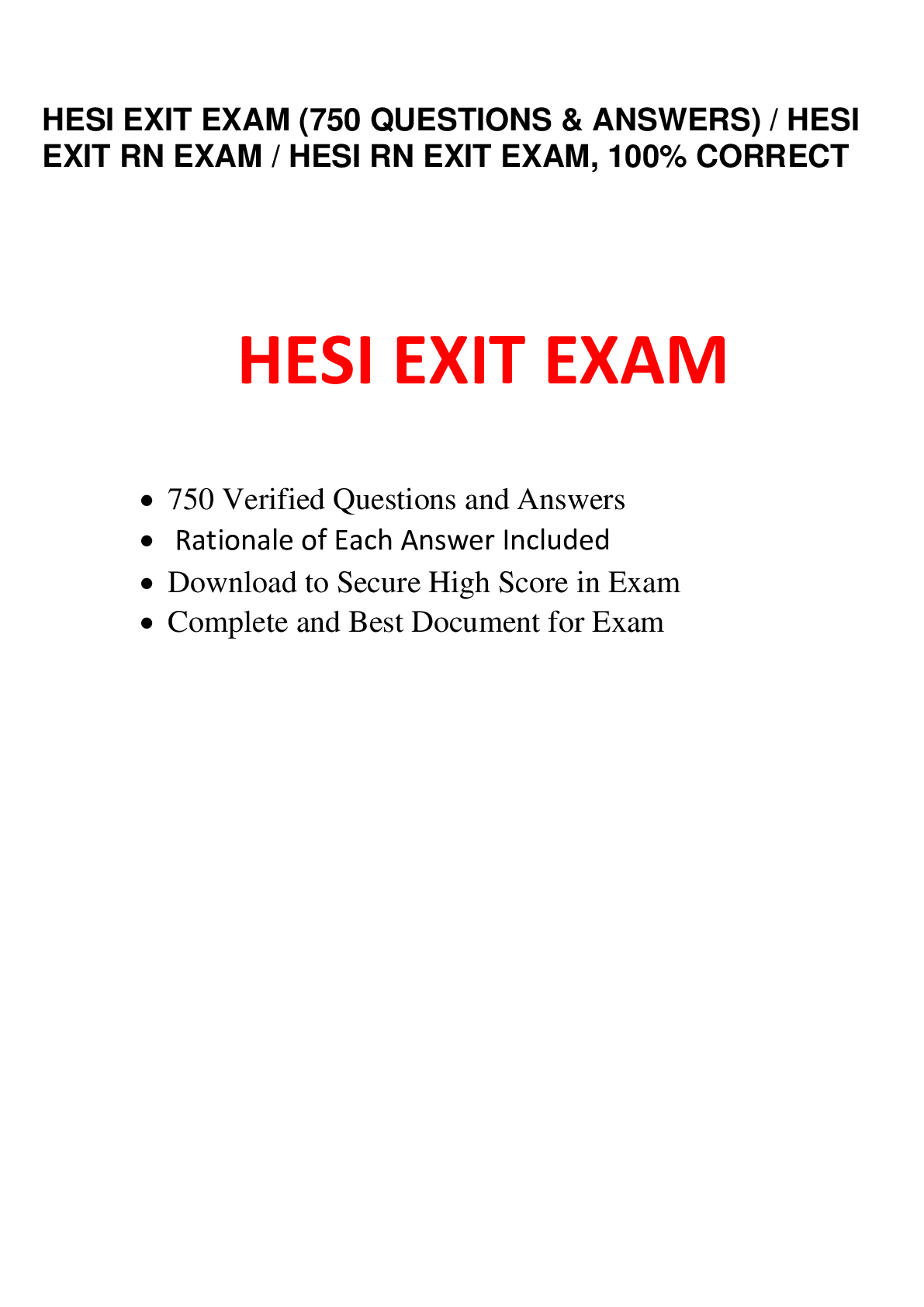

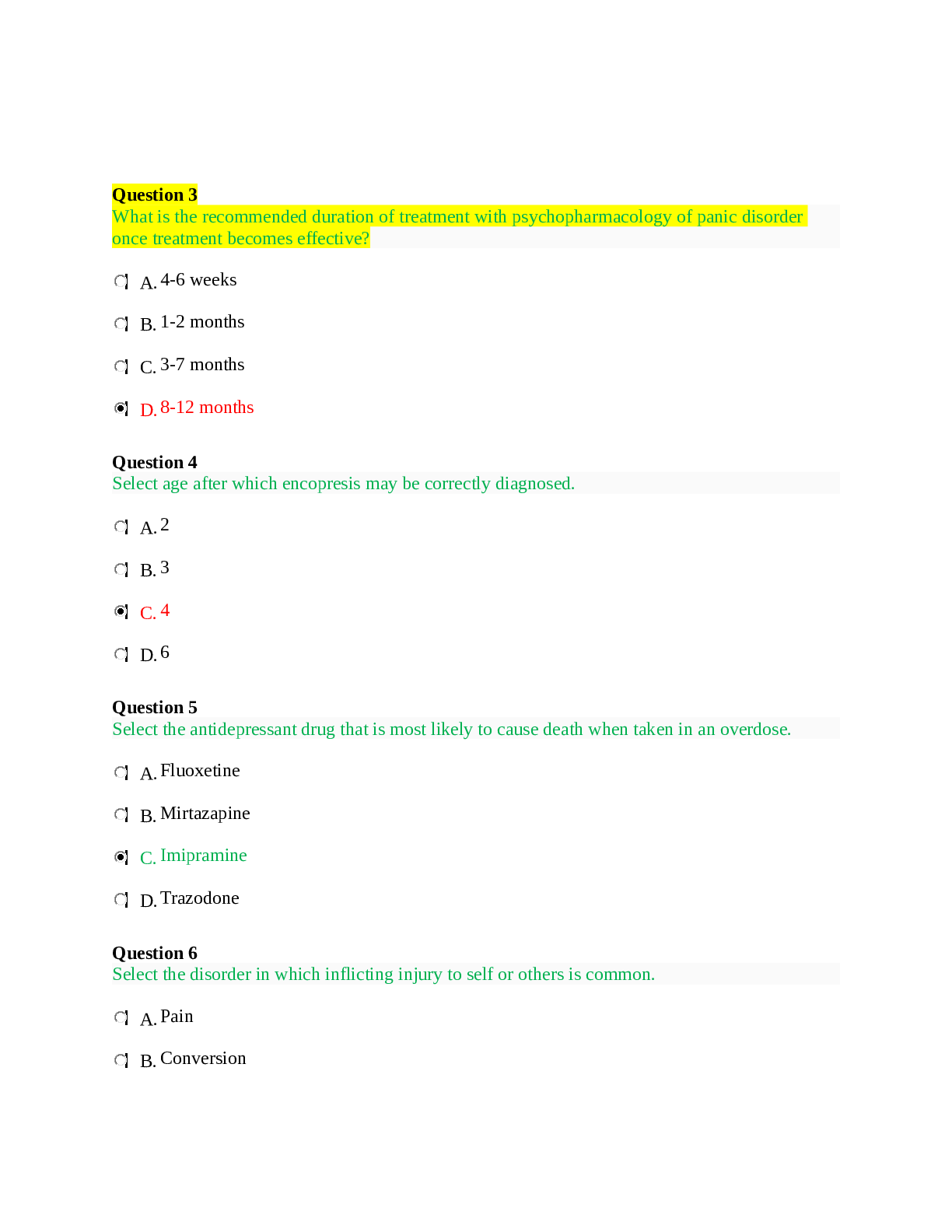



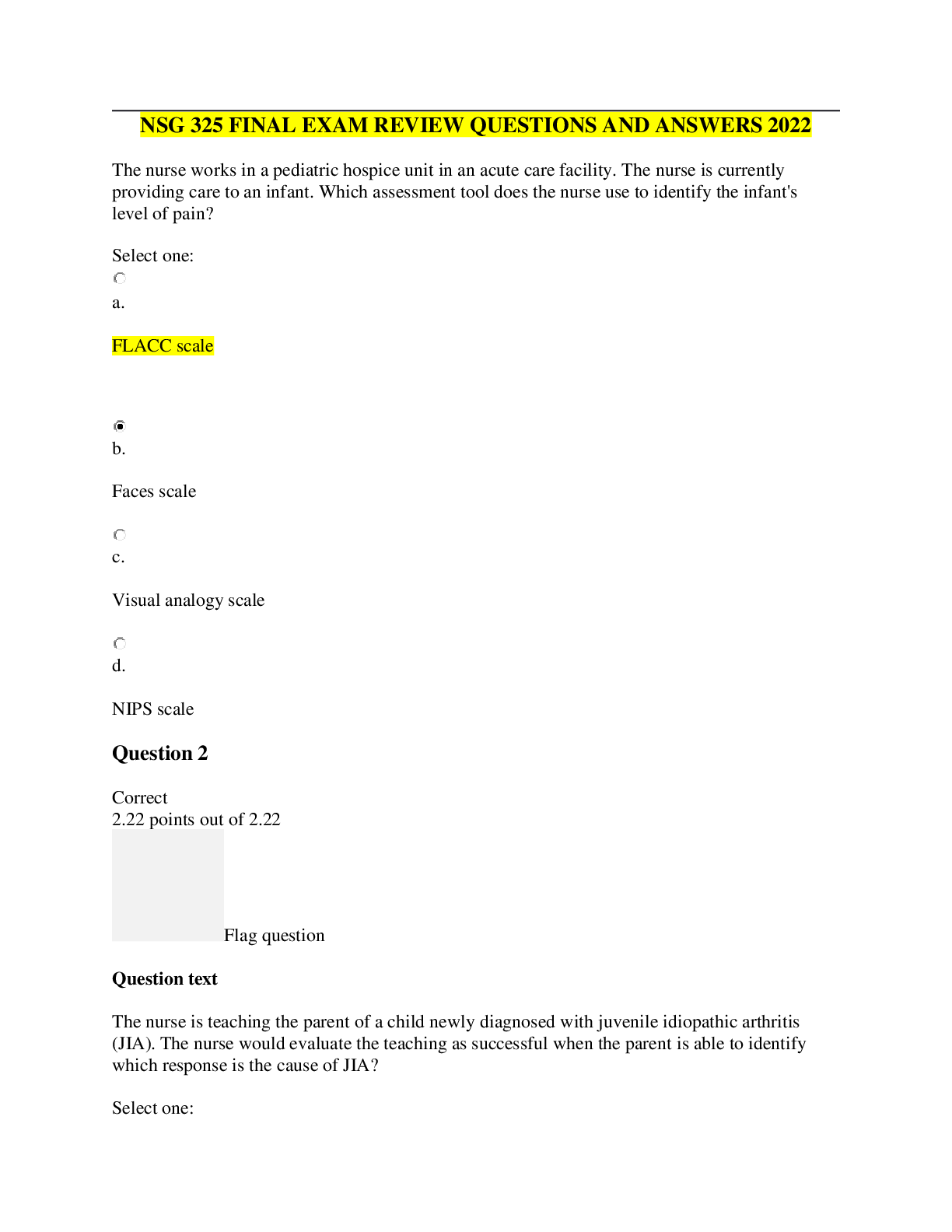
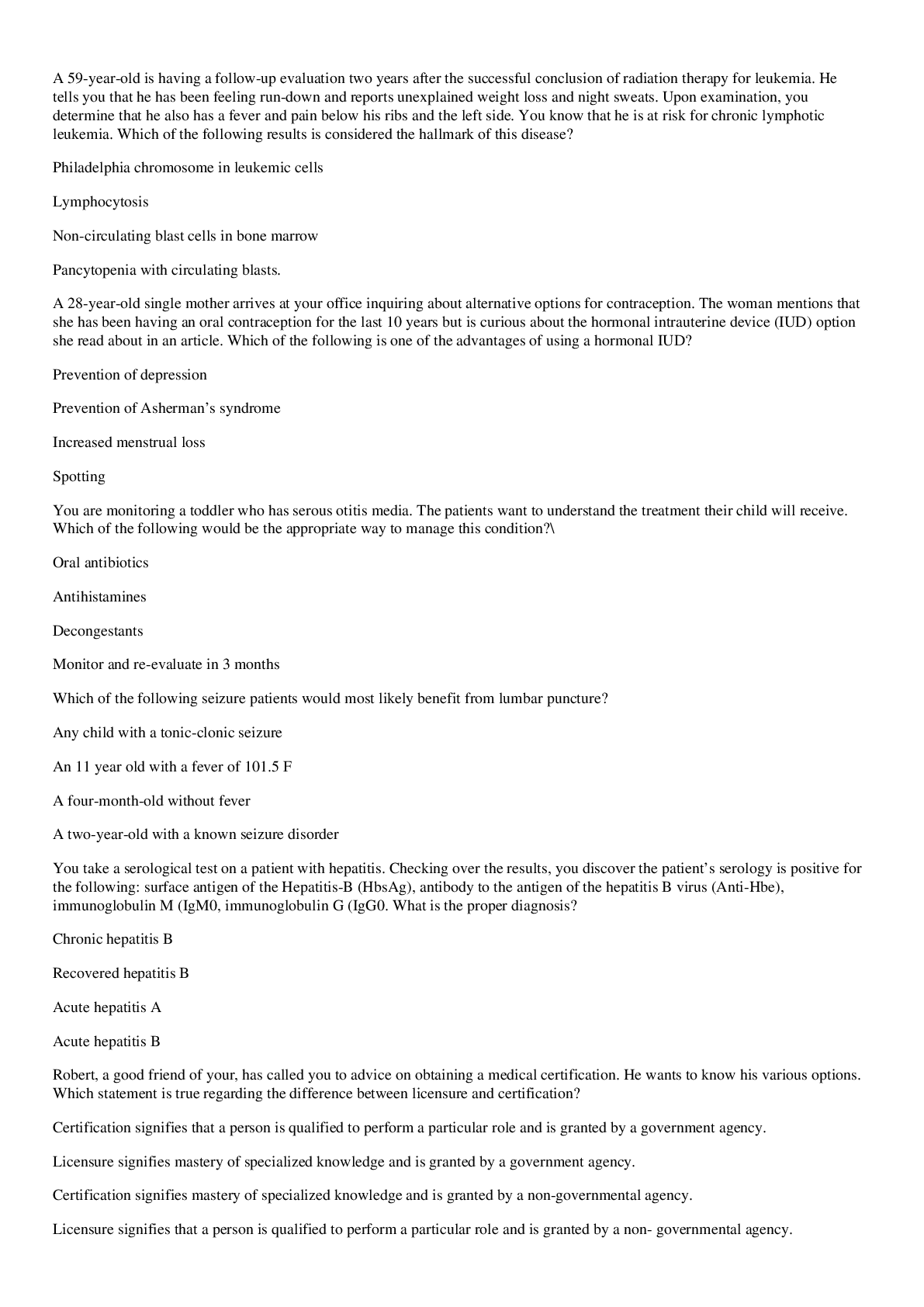
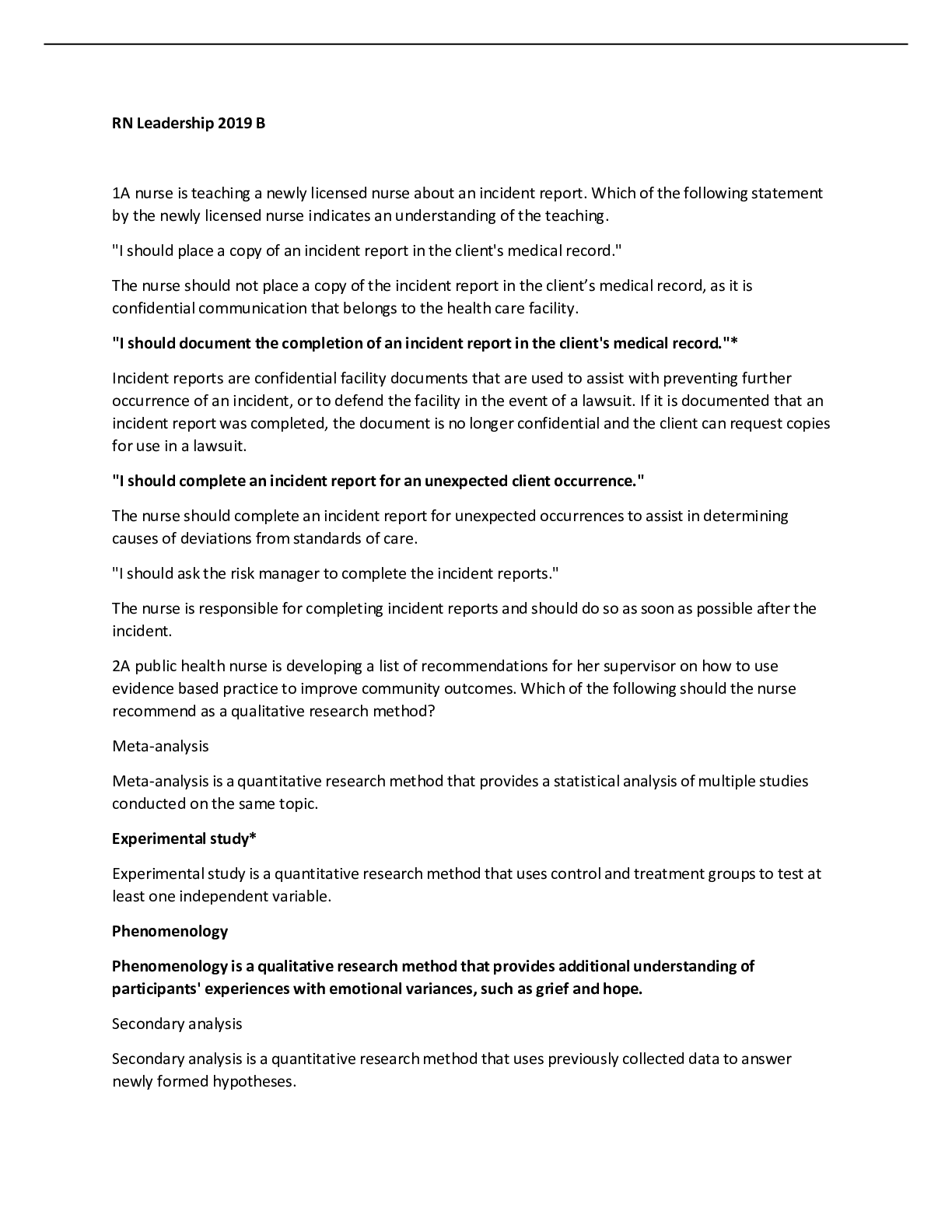




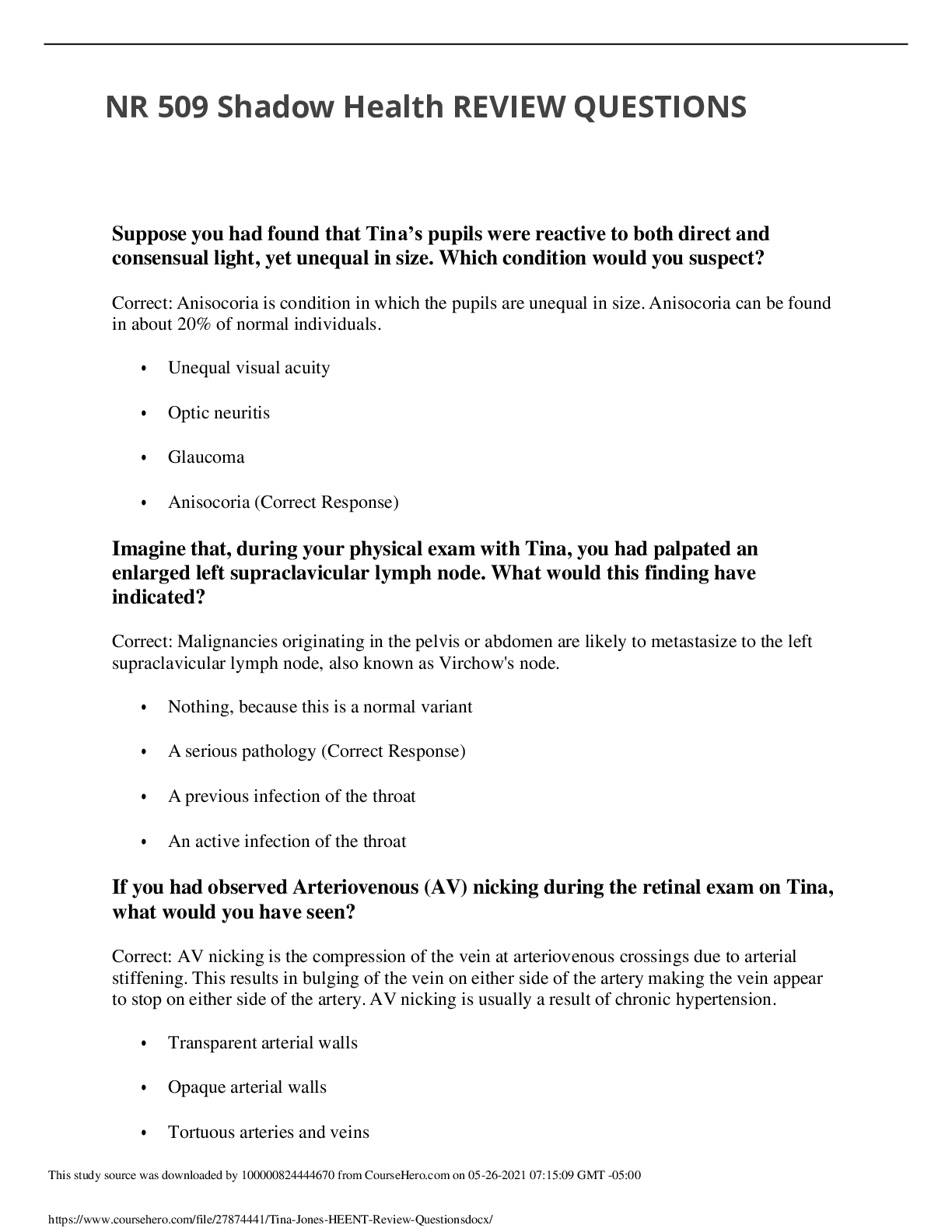

 tintin.png)


